Editorial images were always a backbone of microstocks, even before the development of generative AI. In the end, it’s much cheaper for news outlets to source content from local photographers than to send somebody to shoot. Also, it was a “secret” backup plan for many contributors if their work contained identifiable people or property, whom they didn’t have a model release for.
However, it wasn’t always clear if there was a point of doubling down on editorial content or to rather avoid it. In this study, we’re looking at Steve Heap’s earnings data again in attempt to shed some light on it.
About this study
A big thank you to Steve Heap for providing 16 years of historical data and also motivation to write this blogpost. Make sure to check out his blog where he consistently publishes his earnings if you aren’t subscribed already.
A few notes about data: the cutoff is in early 2023, so it does not include 2024 and newer information. In this study we are investigating only Shutterstock and Adobe Stock earnings. Also, it does not include generative AI pictures.
This study draws lines to the previous one, where we make a general deep-dive across agencies. So it might be a great idea to read it first.
What are editorial images
Quoting our editorial content guide:
Editorial photos often capture real-life events, people, or places. It is the other side of the coin from commercial since editorial content cannot be used to sell, promote, or monetize a business, product, or service.
In other words, editorial content depicts real people, places and events, that exist in the real world. It is also one of the reasons it’s considered more future-proof from generative AI which has an especially hard time generating real anything.
Shutterstock case
General statistics
As of the data cutoff date, Steve Heap’s Shutterstock portfolio split between sold commercial and editorial pictures is this:
Note: “Count” is only for pictures that got sold
| Type | Count | Earnings |
|---|---|---|
| Editorial | 1,530 | $7,035 |
| Commercial | 8,609 | $103,743 |
Here we have that Editorial files are roughly 15% of Steve’s portfolio in files sold, but in dollars account for about 6% of earnings. So, obviously, per file, they bring less income than commercial ones.
Earnings per year
If we split earnings per year (note that Steve’s portfolio grows by size too), here’s the picture on Shutterstock:
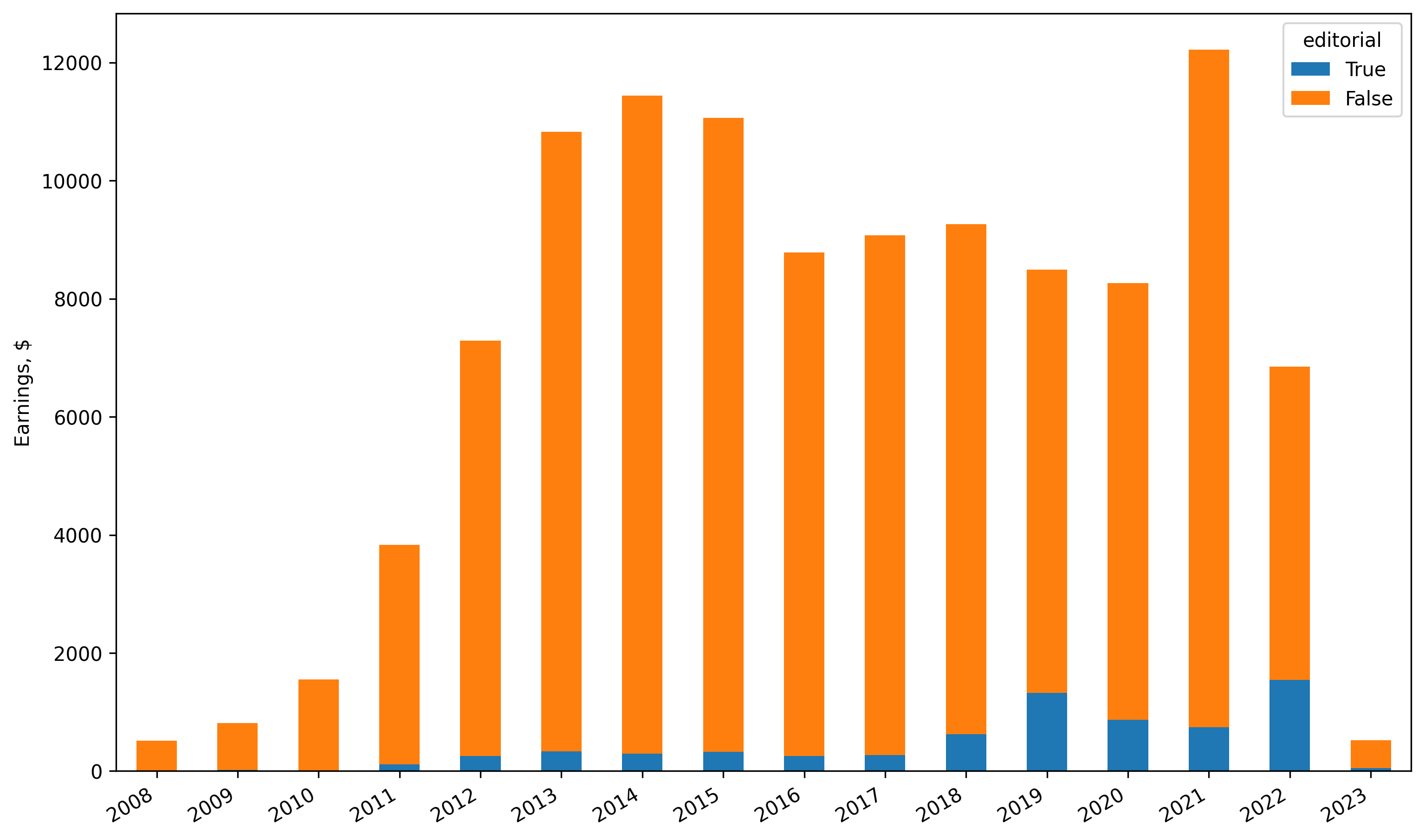
We can notice on the chart that commercial vs editorial earnings do not correlate. Or, said otherwise, they grow and shrink independently of one another.
Earnings per category
When split per underlying category, this is how it looks:
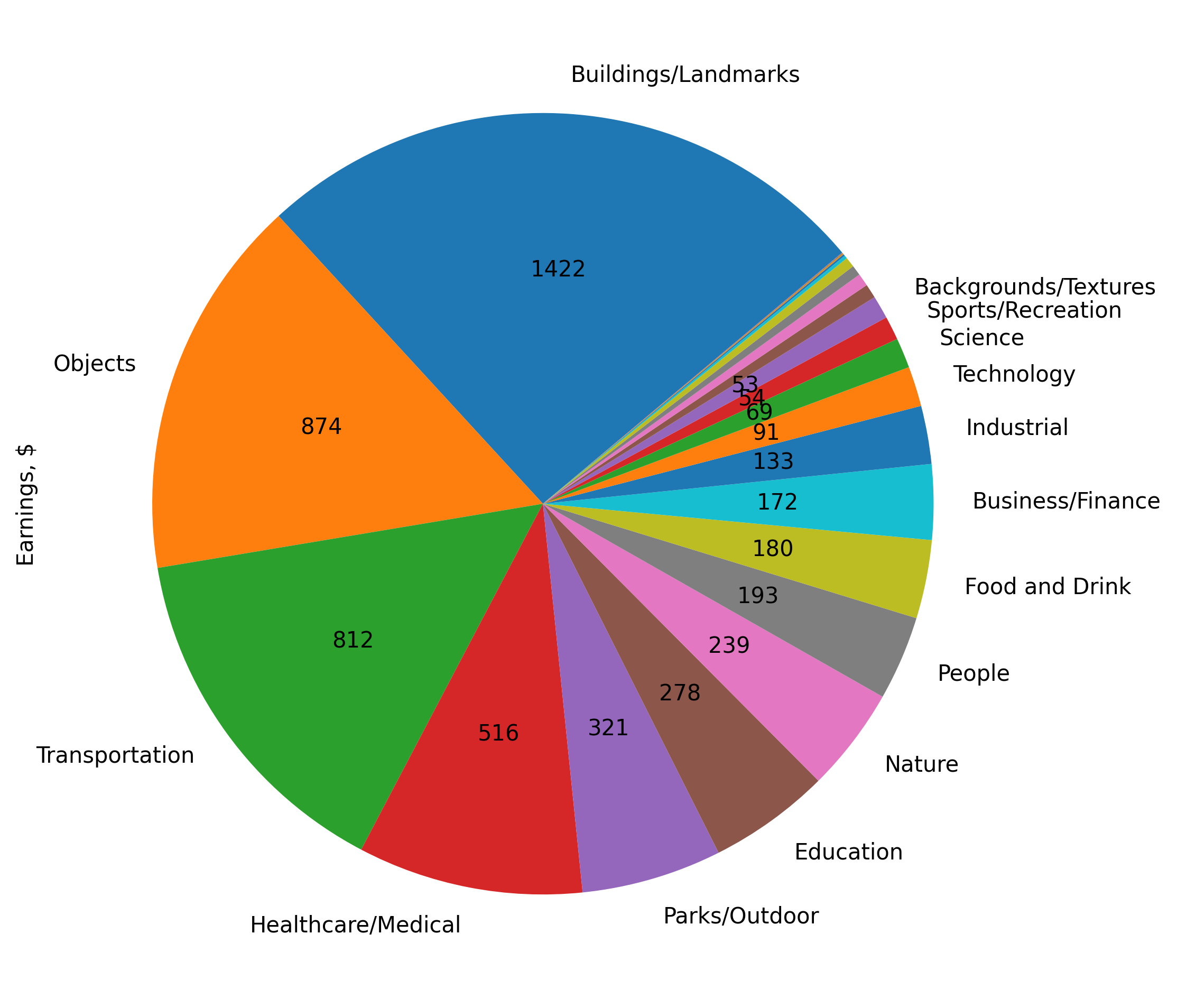
You can see the top-5 editorial categories by earnings:
| Category | Earnings |
|---|---|
| Buildings/Landmarks | $1,422 |
| Objects | $874 |
| Transportation | $812 |
| Healthcare/Medical | $516 |
| Parks/Outdoors | $321 |
Despite the individual best-seller (discussed below in this blogpost) is in the Objects category, the aggregated editorial top-earner is the Buildings/Landmarks category.
If you’re interested about a deep-dive into best-selling categories overall, check out this blogpost.
How much editorial files earn on Shutterstock
Another question we might ask is how much lifetime earnings each editorial vs commercial file produced. To do that, we sum the lifetime earnings of all files and group them in buckets of lifetime earnings (just as we did in the original study).
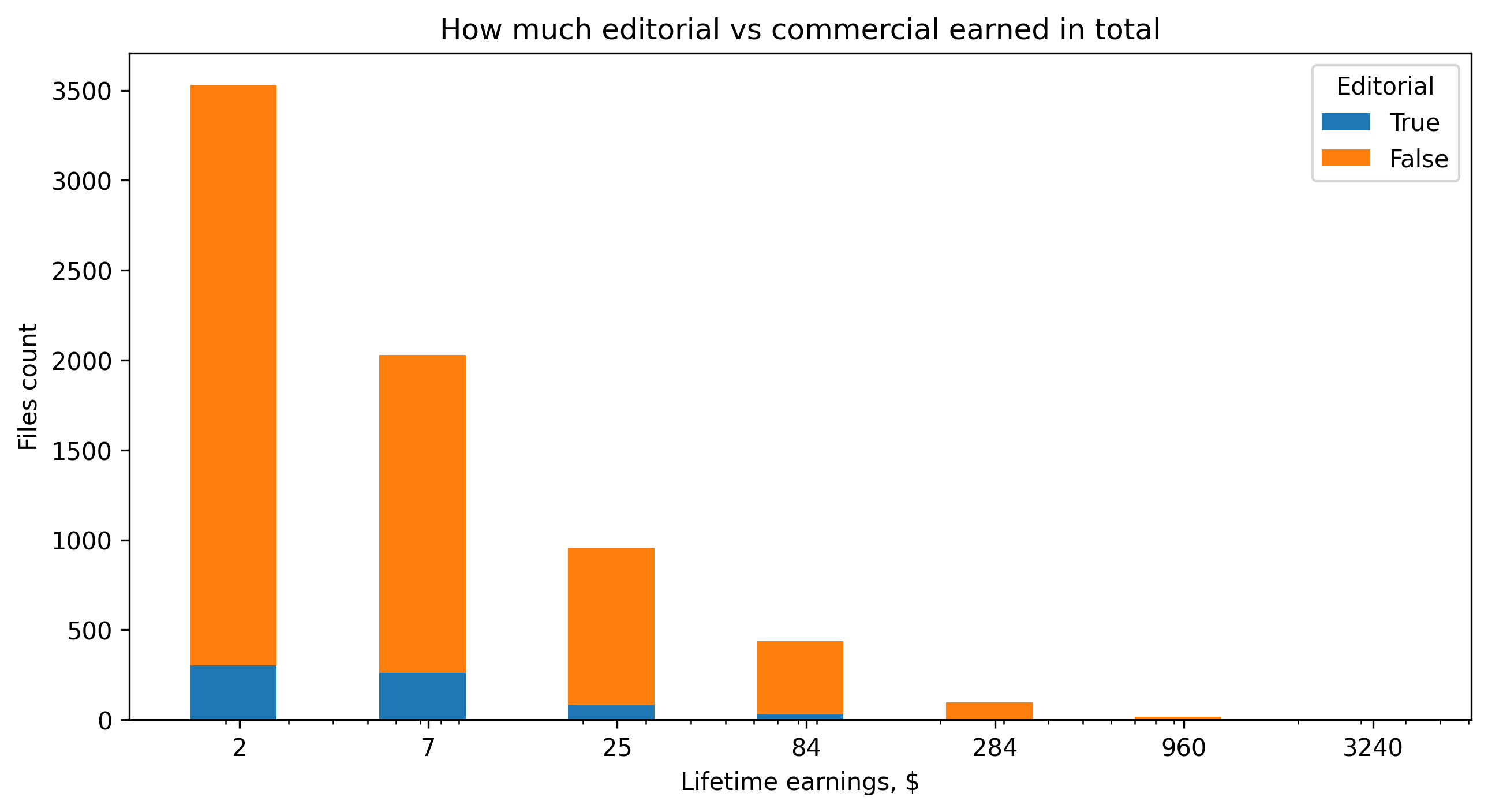
The horizontal axis shows lifetime earnings and the vertical axis shows how many files have produced these lifetime earnings. For example, in the leftmost column about 400 editorial files (blue color) have produced about $2 each in lifetime earnings, and about as much also produced around $7. Smaller amounts (around 200 files) have produced around $25 each in the lifetime.
Adobe Stock case
Note: Adobe Stock is more restrictive on editorial content, having only products allowed (no people or places).
General statistics
On the Adobe Stock, however, the situation is a bit different.
Note: “Count” is only for pictures that got sold
| Type | Count | Earnings |
|---|---|---|
| Editorial | 464 | $1032 |
| Commercial | 5137 | $42402 |
While editorial files account for about 8% of file count, they total 2% in earnings. On Shutterstock the difference was a bit more than three-fold (15% in files, 6% in earnings), while here it’s 4x. So looks like editorial content sales on Adobe Stock aren’t as great of a deal.
Earnings per year
If we split earnings per year, here’s the picture on Adobe Stock:
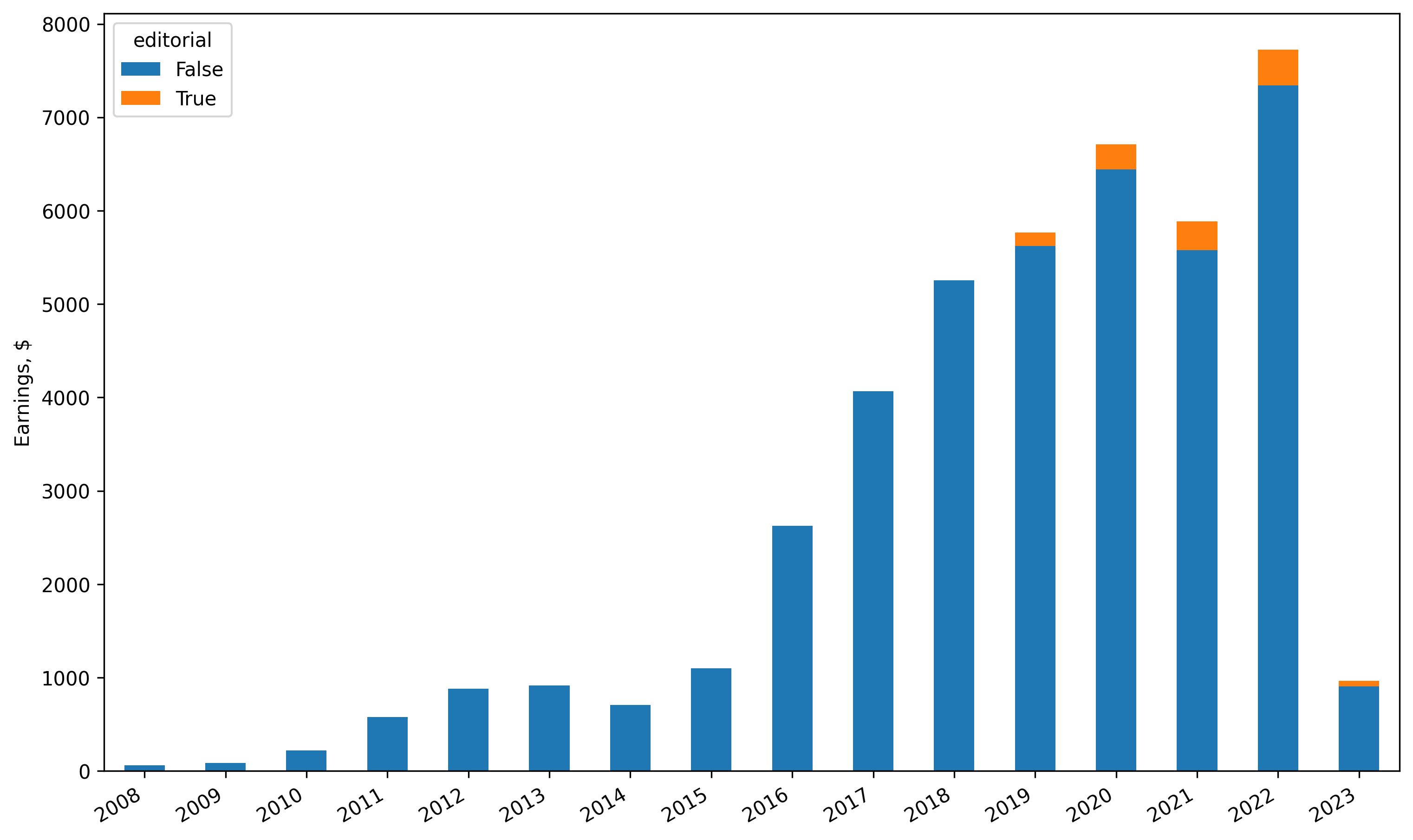
It’s easy to notice the difference with Shutterstock: namely that editorial earnings have been a minuscule part of the commercial ones over the years.
Earnings per category
Please note that this split is not very representative as Adobe isn’t allowing editorial content with people or places. Therefore, it does not give the full picture.
Buildings and Architecturehere only refers to the brand signs on buildings as per Adobe policy, not the actual “editorial building content”
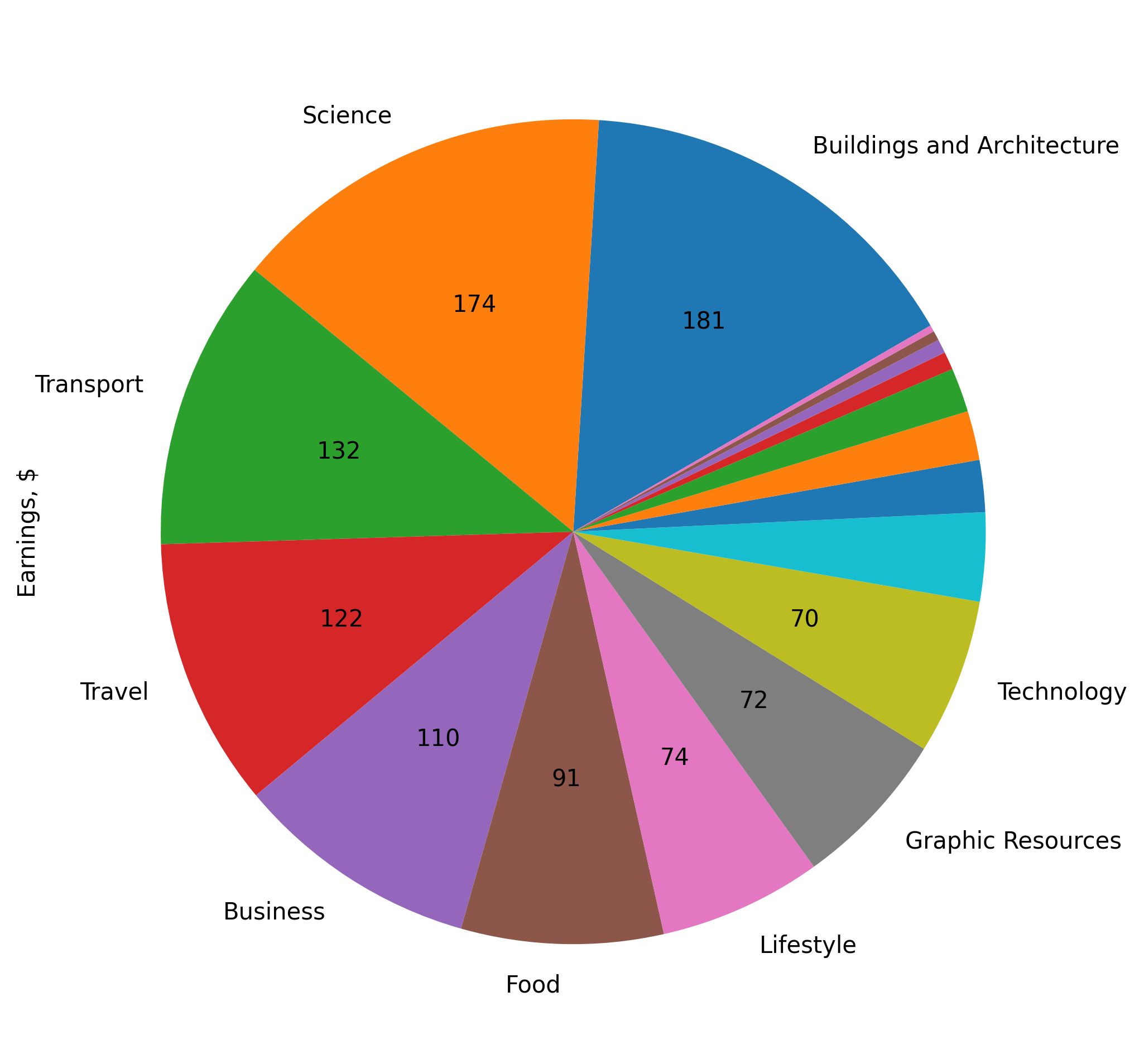
So here the top-5 editorial categories are:
| Category | Earnings |
|---|---|
| Buildings and Architecture | $181 |
| Science | $174 |
| Transport | $132 |
| Travel | $122 |
| Business | $110 |
Actually similar to Shutterstock, Buildings and Transport are the consistent best-sellers for editorials, alongside with others.
How much editorial files earn on Adobe Stock
This general trend is kept if we split the earnings per file, just as we did for Shutterstock.
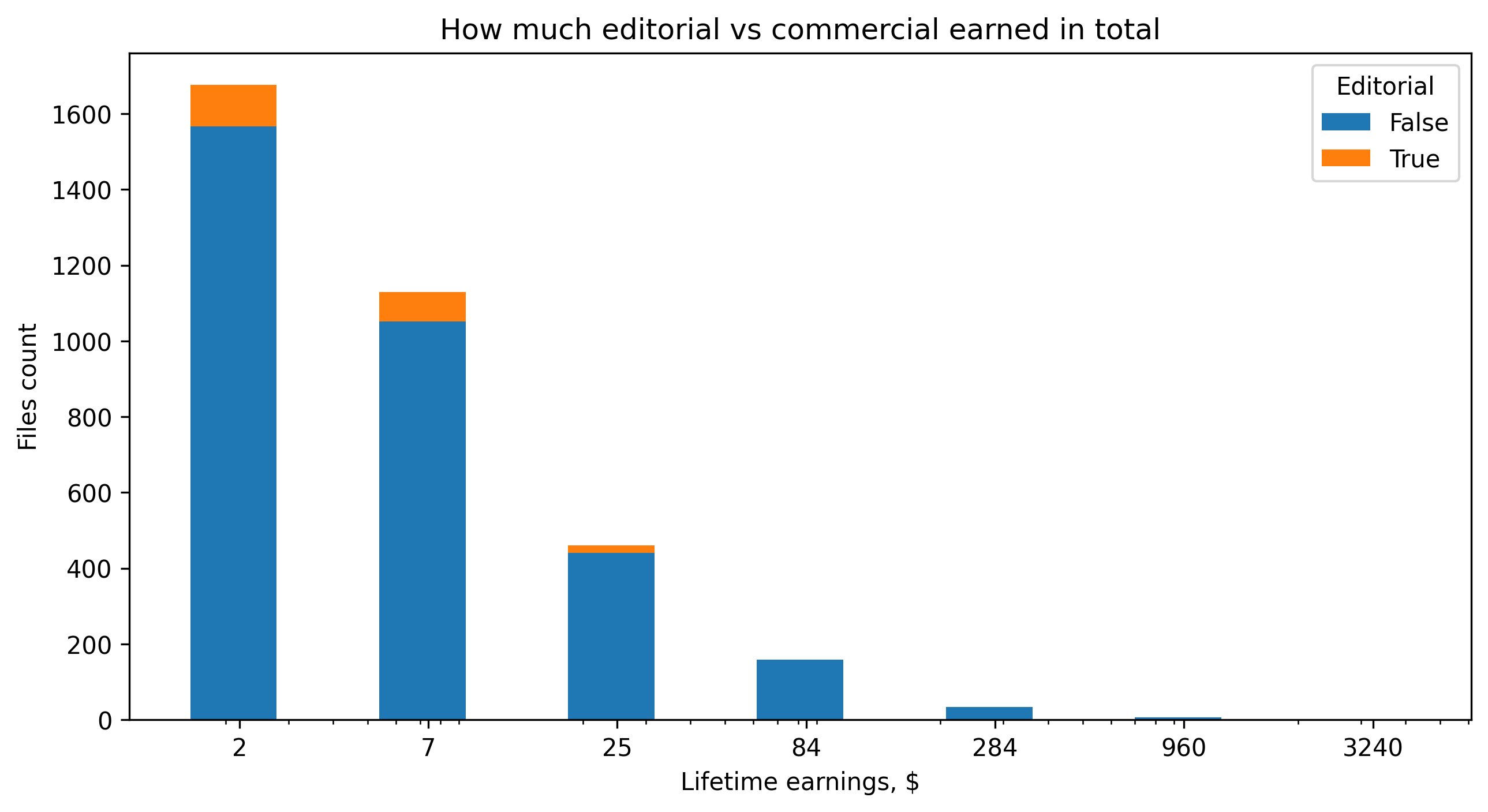
The vast majority of editorial files (a bit less than 100) have brought around $2 in their lifetime. Even less (about 50) have brought $7.
Editorial best-sellers
If we sort pictures by their lifetime earnings, here’s how the best-sellers look:
Note: many Shutterstock pictures were omitted to show top Adobe ones
| # | Agency | Photo ID | Earnings |
|---|---|---|---|
| 1 | Shutterstock | 1163989018 | $498 |
| 2 | Shutterstock | 1353377015 | $420 |
| 2 | Shutterstock | 1164002674 | $167 |
| 4 | Shutterstock | 1195350997 | $123 |
| 5 | Shutterstock | 114954946 | $109 |
| .. | Shutterstock | … | … |
| 978 | Adobe Stock | 294728971 | $29 |
| 979 | Adobe Stock | 460348453 | $29 |
| 980 | Adobe Stock | 425629633 | $22 |
The difference between Shutterstock and Adobe Stock is again huge. Shutterstock has many files that brought over a hundred bucks (even as much as $500), while Adobe Stock’s tops out at $30.
If you’re curious, here’s Steve’s best-seller in the position 1:

Steve's editorial best-seller on Shutterstock (as of 2023)
Conclusion
It’s obvious, that at least now, the earnings potential between commercial and editorial images is not in favor of the latter. On Shutterstock commercial images bring on average three times more and on Adobe Stock - up to four times more money, at least in this case. On the flip side, their earnings are not correlated which makes them a great diversification asset, if you have a large portfolio. And judging by the numbers, Shutterstock is more worth the effort of submitting them, than Adobe Stock.




